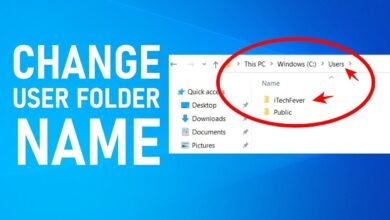
Citizen science projects have emerged as a powerful force in American scientific research, engaging everyday people in meaningful contributions to fields ranging from ecology to astronomy. By democratizing data collection and analysis, these initiatives not only accelerate discoveries but also foster a deeper public connection to science. In an era where technology makes participation easier than ever, citizen science projects are reshaping how research is conducted blending professional expertise. This article explores their growth, impact, challenges, and future potential in the United States.
The concept of citizen science projects where non-professionals collaborate with scientists has seen explosive growth in the U.S. over the past two decades. What began as small-scale community observations has evolved into a nationwide movement, supported by digital tools and a growing recognition of public contributions to research. From tracking climate change to documenting biodiversity, volunteers are now essential partners in scientific discovery. This shift reflects a broader trend toward open science, where transparency and inclusivity enhance innovation.
The Rise of Citizen Science Projects in the U.S.
The Evolution of Citizen Science in America
Citizen science is not a new phenomenon. Before the digital age, amateur naturalists like John James Audubon and Charles Darwin made groundbreaking contributions through observation and documentation. However, the rise of the internet and smartphones has revolutionized participation, allowing millions to contribute data in real time. Organizations such as SciStarter, Zooniverse, and the Cornell Lab of Ornithology have built platforms that connect researchers with volunteers, making science more accessible than ever.
Government Agencies
One of the most successful examples is eBird, a project that enlists birdwatchers to log sightings, creating one of the largest biodiversity datasets in the world. Similarly, NASA’s GLOBE Observer invites users to photograph clouds and land cover, aiding climate research. Government agencies, including the EPA and NOAA, have also embraced citizen science, supporting initiatives that monitor water quality, air pollution, and marine ecosystems.
The Growth of Citizen Science in the U.S.
The growth of citizen science projects can be attributed to several factors. Increased internet access, smartphone usage, and social media have made it easier to recruit and coordinate volunteers. Additionally, scientists are increasingly acknowledging the benefits of crowdsourced data, which can cover larger geographic areas and longer timeframes than traditional research methods. From tracking endangered species to monitoring environmental changes, the impact of citizen science projects is undeniable.
The next generation of Scientists
The expansion of citizen science projects can be attributed to several key factors. The widespread availability of smartphones allows instant data uploads, while social media helps recruit and organize volunteers. Scientists increasingly recognize that public participation can provide vast amounts of data across wider geographic areas than traditional research methods. Additionally, schools and universities are incorporating these projects into STEM education, inspiring the next generation of scientists.
The Impact of Citizen Science on Research and Society
The contributions of citizen science projects span multiple disciplines, yielding discoveries that would be impossible without public involvement. In ecology, platforms like iNaturalist have generated millions of species records, helping track invasive species and endangered wildlife. Astronomy projects like Galaxy Zoo have enabled volunteers to classify galaxies, leading to new insights into cosmic structures.
Scientific Literacy
Beyond data collection, citizen science projects enhance scientific literacy by making research tangible. Participants gain firsthand experience with the scientific method, fostering critical thinking and environmental stewardship. These projects also build trust between scientists and communities, particularly in areas where research directly impacts local livelihoods. AirVisual engage citizens in tracking air pollution, providing real-time data that informs public health policy.
Environmental Monitoring
Environmental monitoring has particularly benefited from public participation. The Community Collaborative Rain, Hail, and Snow Network relies on volunteers to measure precipitation, improving weather models and flood predictions. Air quality initiatives, such as PurpleAir, use low-cost sensors to create hyperlocal pollution maps, influencing public health policies. Public participation has also enhanced environmental monitoring.
Concept of Citizen Science
The concept of citizen science is not new, but its scale and influence have grown dramatically in the past two decades. Historically, amateur naturalists like John James Audubon contributed valuable observations to science. Today, technological advancements have expanded opportunities for public participation. Organizations like SciStarter, Zooniverse, and the Cornell Lab of Ornithology have developed platforms where millions of volunteers can engage in research.
Future Directions
Looking ahead, the future of citizen science projects is promising. Advances in artificial intelligence and machine learning can help process large datasets more efficiently. Partnerships between universities, governments, and nonprofits will further expand the reach of these initiatives. As climate change and biodiversity loss intensify, public involvement in science will become even more crucial. Efforts are underway to engage underrepresented communities through targeted outreach and multilingual platforms.
Challenges
Despite their success, citizen science projects face hurdles. Data accuracy can vary, as untrained volunteers may misinterpret observations. Researchers address this through training modules, automated validation tools, and peer review systems. Another challenge is inclusivity participation often skews toward wealthier, educated demographics. Efforts to broaden engagement include multilingual platforms, partnerships with community organizations, and initiatives targeting underrepresented groups.
The Path Forward
Looking ahead, the future of citizen science projects is bright. Artificial intelligence can help process large datasets, while blockchain technology may enhance data transparency. Federal and state governments are increasingly funding these initiatives, recognizing their value in policymaking. As global challenges like climate change and biodiversity loss intensify, public involvement in science will become even more crucial.
Read More: Top Budget Phones in the U.S. That Punch Above Their Weight
Conclusion
Citizen science projects have transformed the way research is conducted in the U.S., proving that scientific progress is a collective effort. By empowering ordinary people to contribute to real-world studies, these initiatives bridge the gap between academia and the public, fostering a culture of curiosity and collaboration. From tracking wildlife migrations to monitoring pollution, the impact of citizen science projects is undeniable they make science more inclusive, scalable, and impactful.
As technology advances, the potential for public participation in research will only grow. The key to sustaining this movement lies in improving accessibility, ensuring data reliability, and maintaining public trust. With continued innovation and community engagement, citizen science projects will remain a vital tool in addressing some of humanity’s greatest challenges, proving that science is stronger when everyone has a role to play.
FAQs
What are citizen science projects?
Citizen science projects involve the public in scientific research, allowing volunteers to collect data, analyze findings, and contribute to studies across various fields.
How can I get involved in citizen science?
Platforms like SciStarter, Zooniverse, and iNaturalist offer numerous projects where anyone can participate, regardless of scientific background. As technology advances, the potential for public participation in research will only grow.
Is the data from citizen science reliable?
While data quality varies, researchers use validation techniques, training programs, and automated checks to ensure accuracy, though accuracy depends on proper participation guidelines.
What are some well-known citizen science projects?
Popular examples include eBird (bird tracking), Galaxy Zoo (astronomy), and CoCoRaHS (weather monitoring). It expands research capabilities, increases public engagement with science, and helps address global challenges.
Why is citizen science important?
It expands research capabilities, increases public engagement with science, and helps tackle global issues like climate change and species conservation. If possible, use standard charging methods when you’re not in a hurry.











